 1985 Mercedes-Benz S124 Dimensions, Size & Specs
1985 Mercedes-Benz S124 Dimensions, Size & SpecsMeasurements of the 1985 Mercedes-Benz S124, engineered for optimal performance and comfort
| Dimensions | |
|---|---|
| Length: | 4765 mm187.6 in15.6 ft |
| Width: | 1740 mm68.5 in5.7 ft |
| Height: | 1490-1498 mm58.7-59.0 in4.9-4.9 ft |
| Weight Specifications | |
| Curb Weight: | 1390-1740 kg3064-3836 lbs |
| Maximal permitted Weight: | 1740-2285 kg3836-5038 lbs |
| Tire Specifications | |
| Rims Sizes: | 15-inch rims:
|
| Tire Size: |
|
The Mercedes-Benz W124 S124 generation, produced from 1985 to 1989, represents the station wagon variant of the acclaimed W124 series renowned for its engineering excellence and durable build quality. This generation station wagon features a length of 4765 mm (187.4 inches), a width of 1740 mm (68.5 inches), and a height ranging between 1490 mm to 1498 mm (58.7 to 59.0 inches), providing a spacious yet well-proportioned footprint suitable for both family and cargo needs. The curb weight of these vehicles varies between 1390 kg to 1740 kg (3060 to 3836 lbs), depending on trim and equipment, while the maximum permissible weight ranges from 1740 kg to 2285 kg (3836 to 5036 lbs), ensuring robust load-carrying capacity that complements its practical wagon design. Equipped with 6.5J x 15 and 9.5J x 15 rim sizes, the S124 uses 195/65 R15 tires that balance ride comfort with stable handling, making it reliable on a variety of road surfaces. The overall package reflects a classic Mercedes-Benz combination of quality, utility, and solid dimensions that remain competitive in comparison with other wagons of the late 1980s. Enthusiasts and buyers can appreciate the thoughtful design and utility of the S124 station wagon, which preserves the classic sedan's driving dynamics while offering enhanced cargo versatility.
Discover the standout features that make the 1985 Mercedes-Benz S124 a leader in its class
Have a question? Please check our knowledgebase first.
The Mercedes-Benz W124 S124 station wagon, produced between 1985 and 1989, features a length of 4765 mm (187.4 inches), a width of 1740 mm (68.5 inches), and a height that varies between 1490 mm and 1498 mm (58.7 to 59 inches), depending on specific configurations. These dimensions place the S124 firmly in the mid-to-large station wagon category for its era, offering a spacious interior and versatile cargo capacity while maintaining a relatively manageable footprint for urban and suburban driving. Its overall design balances aerodynamic efficiency with practicality, evident in its sleek yet functional profile.
The Mercedes-Benz W124 S124 station wagon has a curb weight ranging from 1390 kg to 1740 kg (3064 to 3836 pounds), depending on the engine option, trim level, and equipment installed. The maximum allowed weight for this model is between 1740 kg and 2285 kg (3836 to 5038 pounds). This range indicates the vehicle's capability to carry passengers and cargo efficiently without compromising handling or safety. The weight variations are typical for wagons offering multiple engine choices and optional equipment packages, giving buyers flexibility to tailor the vehicle to their needs.
With a width of 1740 mm (68.5 inches), the W124 S124 wagon is relatively narrow compared to many modern station wagons, which often exceed 1800 mm (70.9 inches) in width. This narrower width makes the S124 easier to maneuver and park in tight spaces, an advantage in urban settings. Despite being narrower, the interior space was efficiently designed to maximize passenger comfort and cargo capacity for its time. However, modern wagons tend to offer more interior width and shoulder room due to advances in engineering and consumer preferences for larger vehicles.
The height of the Mercedes-Benz W124 S124 station wagon ranges between 1490 mm and 1498 mm (58.7 to 59 inches). This modest height allows the vehicle to have a low center of gravity, which improves handling and stability on the road. Additionally, the relatively low roofline helps reduce aerodynamic drag and wind noise, contributing to a smoother driving experience. While the height is compact, the interior headroom remains ample for passengers, especially given the wagon's design focused on comfort and utility.
Yes, the Mercedes-Benz W124 S124 station wagon can fit into a standard garage. With its length of 4765 mm (187.4 inches) and width of 1740 mm (68.5 inches), it comfortably fits within the average single-car garage dimensions, which typically range around 6 meters (20 feet) deep and 3 meters (10 feet) wide. The height of up to 1498 mm (59 inches) also poses no clearance issues with standard residential garage door heights. Owners should ensure enough additional space for maneuvering and opening doors, but overall, storing this vehicle in a typical garage is quite feasible.
Compared to its predecessor, the Mercedes-Benz W123 series station wagons, the W124 S124 offers a more refined and slightly larger package dimensionally. The W124 S124 is longer at 4765 mm (187.4 inches) versus the W123's approximately 4730 mm (186.2 inches), and it is somewhat narrower, which improves aerodynamics. Height is similar or slightly reduced for a sportier stance. The wheelbase and overall proportions were optimized to enhance ride comfort, interior space, and stability. The result is a vehicle that provides more modern styling and improved functionality while retaining the practical characteristics that made the earlier model popular.
The Mercedes-Benz W124 S124 station wagon typically comes with rim sizes ranging from 6.5J x 15 inches to 9.5J x 15 inches, paired with tire dimensions mainly set at 195/65 R15. These specifications allow for good road grip, comfort, and handling balance. The wheel and tire combinations are well suited for this vehicle's weight and intended use, providing a smooth ride with adequate responsiveness. The 15-inch wheels were standard for many vehicles of the era, striking a balance between aesthetics, ride quality, and performance.
The Mercedes-Benz W124 S124 station wagon is known for offering competitive cargo space compared to other mid-size to full-size wagons from the mid-to-late 1980s. Its rear cargo area is spacious, with a flat load floor and wide opening, thanks to its dedicated station wagon design. While specific volume figures vary by model and armament, the S124's configuration excels in utility, delivering ample room for luggage, groceries, or sports equipment. Compared to competitors like the Audi 100 Avant or Volvo 740 wagon from the same period, the S124 holds its own by combining German build quality with practical dimensions.
Driving the Mercedes-Benz W124 S124 provides a more analog and connected experience compared to modern station wagons. Its suspension and chassis were designed for comfort and durability, offering a composed ride without modern electronic aids like adaptive suspension or traction control systems. The weight range of 1390 to 1740 kg (3064 to 3836 lbs) contributes to a solid feel but also makes the vehicle lighter than many current models, which often include extensive safety equipment. Handling is stable and predictable, though less sharp than today's sportier wagons. Overall, it offers classic Mercedes quality with driving dynamics that reflect 1980s engineering priorities.
The Mercedes-Benz W124 S124 station wagon holds a distinctive position when compared to similar wagons of its era, such as the BMW 5 Series Touring (E28/E34) or the Audi 100 Avant. The S124 emphasizes durability, engineering precision, and elegant design, typical of Mercedes-Benz. It often surpasses rivals in build quality and ride comfort, with a focus on safety and long-term reliability. While competitors might offer sportier handling or more advanced technology depending on the model, the S124's well-balanced size, robust powertrain options, and spacious yet comfortable interior make it a compelling choice among 1980s European station wagons.
Discover similar sized cars.
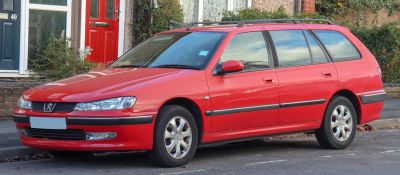
| Production: | 1999-2004 |
|---|---|
| Model Year: | 1999 |
| Length: | 4736 mm186.5 in |
| Width: | 1765 mm69.5 in |
| Height: | 1455-1502 mm57.3-59.1 in |
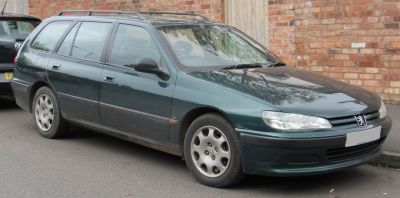
| Production: | 1996-1999 |
|---|---|
| Model Year: | 1996 |
| Length: | 4725-4740 mm186.0-186.6 in |
| Width: | 1765 mm69.5 in |
| Height: | 1505 mm59.3 in |
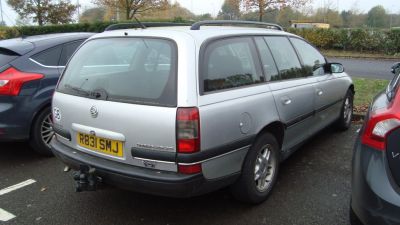
| Production: | 1994-2001 |
|---|---|
| Model Year: | 1994 |
| Length: | 4819 mm189.7 in |
| Width: | 1960 mm77.2 in |
| Height: | 1545 mm60.8 in |

| Production: | 1988-1994 |
|---|---|
| Model Year: | 1989 |
| Length: | 4744 mm186.8 in |
| Width: | 1760 mm69.3 in |
| Height: | 1490 mm58.7 in |
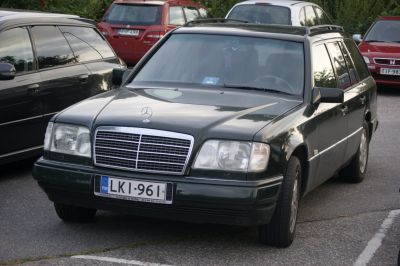
| Production: | 1992-1996 |
|---|---|
| Model Year: | 1993 |
| Length: | 4765 mm187.6 in |
| Width: | 1740 mm68.5 in |
| Height: | 1468-1498 mm57.8-59.0 in |
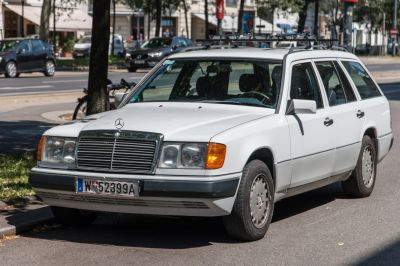
| Production: | 1989-1993 |
|---|---|
| Model Year: | 1989 |
| Length: | 4765 mm187.6 in |
| Width: | 1740 mm68.5 in |
| Height: | 1489-1497 mm58.6-58.9 in |
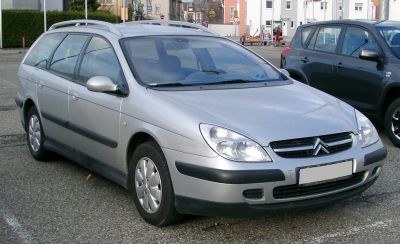
| Production: | 2001-2008 |
|---|---|
| Model Year: | 2001 |
| Length: | 4760 mm187.4 in |
| Width: | 2100 mm82.7 in |
| Height: | 1520 mm59.8 in |

| Production: | 2012-2014 |
|---|---|
| Model Year: | 2012 |
| Length: | 4790 mm188.6 in |
| Width: | 1780 mm70.1 in |
| Height: | 1535 mm60.4 in |
